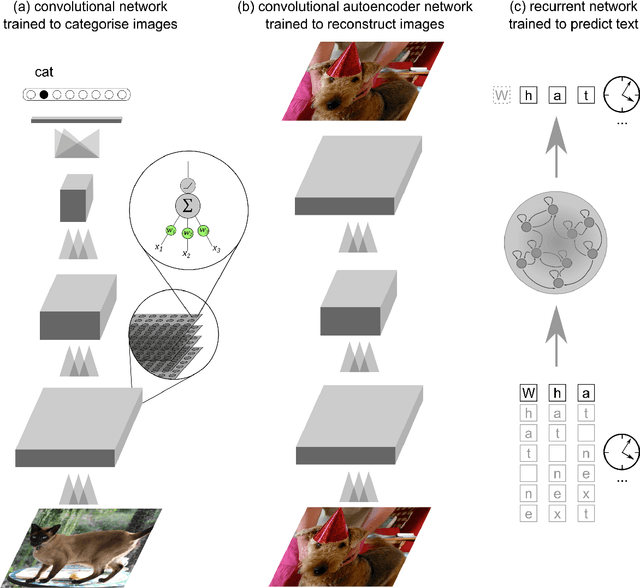Deep Learning for Cognitive Neuroscience
Paper and Code
Mar 04, 2019

Neural network models can now recognise images, understand text, translate languages, and play many human games at human or superhuman levels. These systems are highly abstracted, but are inspired by biological brains and use only biologically plausible computations. In the coming years, neural networks are likely to become less reliant on learning from massive labelled datasets, and more robust and generalisable in their task performance. From their successes and failures, we can learn about the computational requirements of the different tasks at which brains excel. Deep learning also provides the tools for testing cognitive theories. In order to test a theory, we need to realise the proposed information-processing system at scale, so as to be able to assess its feasibility and emergent behaviours. Deep learning allows us to scale up from principles and circuit models to end-to-end trainable models capable of performing complex tasks. There are many levels at which cognitive neuroscientists can use deep learning in their work, from inspiring theories to serving as full computational models. Ongoing advances in deep learning bring us closer to understanding how cognition and perception may be implemented in the brain -- the grand challenge at the core of cognitive neuroscience.
 Add to Chrome
Add to Chrome Add to Firefox
Add to Firefox Add to Edge
Add to Edge